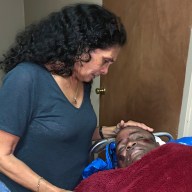In the past decade, there have been exciting advances in women’s reproductive health. The Affordable Care Act mandated that insurance carriers cover routine mammograms and gynecological visits, as well as birth control (unfortunately, there are efforts afoot in Washington to reverse these gains). Plan B, or “the morning-after pill,” was made available for purchase over the counter. And a vaccine now protects girls and boys from developing human papilloma virus.
But there is still a long way to go. According to the American Cancer Society, ovarian cancer kills more American women than any other cancer of the reproductive system. As of 2017, 22,440 women will receive a new diagnosis of ovarian cancer, and about 14,080 women will die from ovarian cancer. September is National Ovarian Cancer Awareness Month, so we talked to Dr. Stephanie V. Blank, director of women’s health at Mount Sinai Downtown-Chelsea Center, for more information on the disease.
How common is ovarian cancer in the U.S.?
Ovarian cancer is 10th most common cancer for women and 5th leading cause of death. There is an estimated 21K cases per year in the US.
What are the risk factors?
Some genetic mutations increase risk – BRCA1, 2 and others. More risk factors include never having had children, increasing age, endometriosis and obesity.
Is it preventable?
Risk of ovarian cancer can be reduced by taking birth control pills or by surgically removing the tubes and ovaries.
What are the symptoms?
The symptoms are vague and nonspecific, but symptoms do exist: pelvic or abdominal pain, bloating, feeling fullness, urinary issues.
What is the survival rate if caught early enough? What is “early enough”?
Early enough is being discovered at stage 1, when it has not spread beyond the ovary. In this case, five-year survival is over 90%.
How is it detected?
When a woman presents with symptoms, it is usually imaging tests — transvaginal ultrasound or CT scan — plus a tumor marker called ca125 that lead to diagnosis. Ovarian cancer is a tissue diagnosis.
How is it treated?
Ovarian cancer is treated with surgery and usually chemotherapy. The most important thing a woman who suspects she has ovarian cancer can do to improve her care is to make sure she is being treated by a gynecologic oncologist. Women with ovarian cancer who are treated by gynecologic oncologists live longer.
Is ovarian cancer more common among women who have had breast cancer or vice versa?
Yes — oftentimes but not always due to these women having a genetic predisposition to cancer.



















